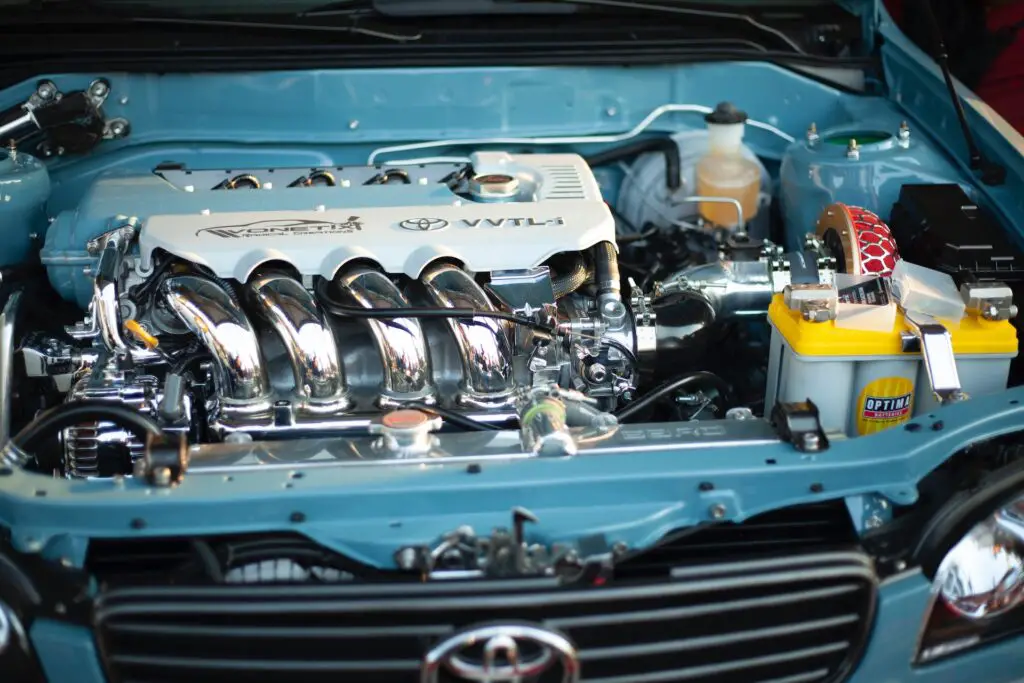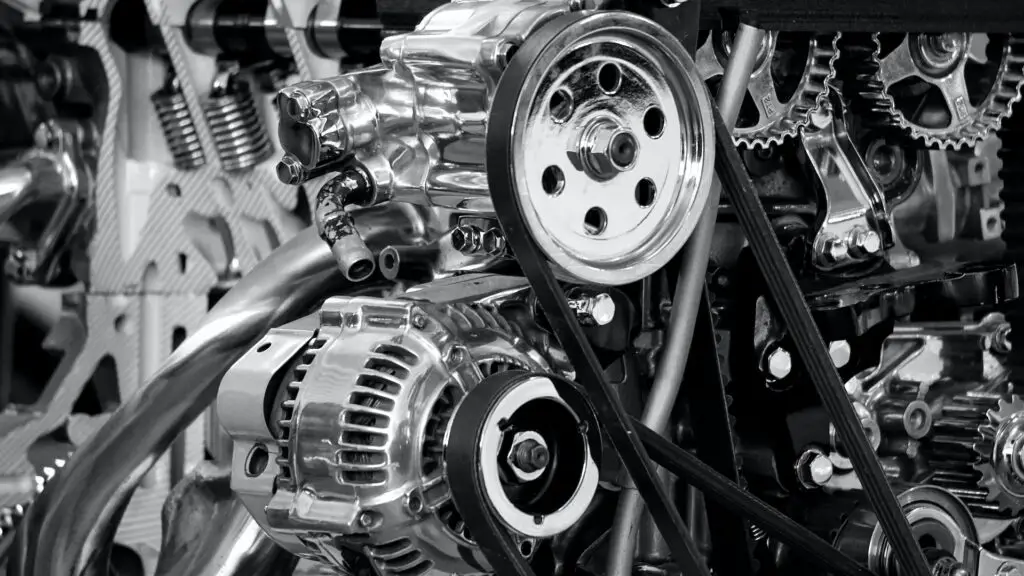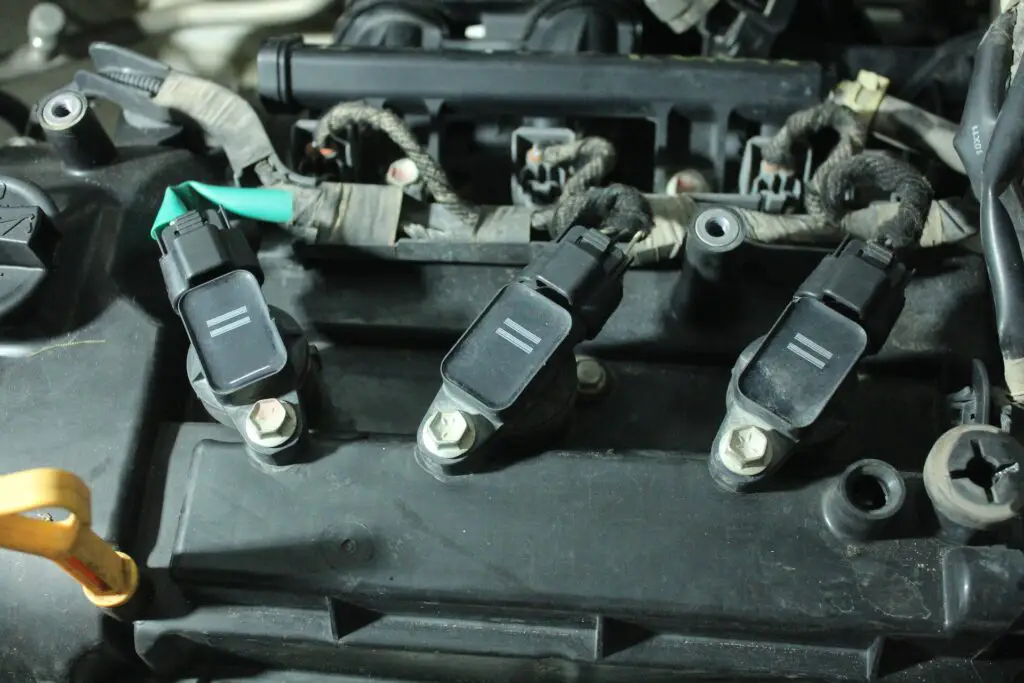Do cold air intakes work? This must be one of the questions that have gone through the minds of ardent car enthusiasts. Thanks, you have come to the right place where we will decipher everything you need to know. This is a question that might not need a ”yes” or ”no” answer. We shall discuss both perspectives so that you can make that informed choice. So keep reading.
A cold air intake is one of the first few changes you can make to any car, as any auto enthusiast would know. With a little creativity, cold air intakes may be installed in almost any car, regardless of how old or new it is. Why, then, do some people ask do cold air intakes work?
Manufacturers are likely working on a cold air induction kit which you can purchase if your automobile has even the slightest sporting history.
Consider the unremarkable yet sensible Volkswagen Golf 1.4 TSI. You can still get a cold air induction kit for it, though.
Moreover, sports automobiles. The Toyota Yaris GR, one of the most recent sports cars to be released, already has a diverse array of cold air induction kits available. Unquestionably, the GR 86 will get one very soon.
These induction kits were produced quickly thanks to manufacturers of performance parts. To use it as a platform for research and development, they either get a donor car or go out and buy one.
Table of Contents
Which Is the Unanswered Question Regarding Cold Air Intake?
But here’s the query that naturally follows from this circumstance. Why are there individuals telling you that professional induction kits don’t work if aftermarket parts vendors put a lot of effort into creating them?
Most petrolheads have expressed this sentiment on the site throughout the years. People today firmly believe that cold air intakes don’t result in any performance improvement.
However, it’s likely that those who claim that cold air intakes don’t improve performance also claim to have one installed. Furthermore, some cold air intakes might be quite expensive.
Why do people still buy cold air intake kits if they don’t work? And why do I usually always suggest it as one of the first modifications you should do in numerous articles that cover different makes and models?
What Do Cold Air Intakes Mean?
First, let’s clarify one thing: what are intakes? Technically speaking, it is a hole or duct that permits liquids to enter.
The intake is effectively the engine’s nose in the context of an engine. In this instance, the fluid is air, and the intake is where the air is sucked into the engine from the outside environment.
Not all cars today indeed have an intake system. An air intake is only necessary for combustion-based engines. Electric vehicles may therefore do without any form of air intake.
However, they still feature air intakes for several parts, including the A/C system and coolant radiator. The intake that is relevant to our discussion, however, is the intake for a combustion engine.
What are the Design Elements of Cold Air Intakes?
Manufacturers are no longer free to place the air intake anywhere they like. Although it would function, it would not be in any way ideal. An engine’s premature demise may be caused by a poorly built intake.
The intake must be placed as high as possible within the available engine dimensions, which is one of the most important design choices. This prevents possible water intrusion. Additionally, it must be far from gravel and dirt.
Even so, the engine will undoubtedly get up dirt. The first line of defense against microscopic particles entering the engine is an air filter.
Away from the oppressive engine heat would be good for the intake, other than that. The intake air temperature will gradually increase as the engine bay eventually becomes heat saturated.
There are two main reasons why it is undesirable. It will, for starters, reduce engine performance. Since colder air is denser, more room is required to fit the same air volume into the combustion chamber.
That is unimportant to automakers. For them, an engine’s emissions must be worse when it is working at a lower volumetric efficiency. More waste is produced since it requires more energy to generate the same amount of power.
In a perfect world, the manufacturer would have enough space to separate the air intake from the engine compartment completely. However, most of the time this isn’t feasible due to space restrictions and financial constraints.

Cold Air Intakes: How Do They Work?
This brings up the subject of the intake of chilly air. By definition, a cold air intake is an intake that blatantly sends cold air to the engine.
This means that a cold air intake should maintain a low intake air temperature independent of the engine’s operating circumstances or length.
The air entering the engine will eventually become heated by the ideal cold air intake. But it is not doable. Cold air intake manufacturers only construct and design their induction kits to be shielded from engine heat.
The main goal of cold air intake is that. Opening the intake flow is the second goal. According to the theory, manufacturers frequently forgo intake air volume in favor of noise compliance, compact size, or price.
The aftermarket industry, nevertheless, hardly ever has to abide by these restrictions. They can therefore increase air intake volume because they have more breathing room.
Owners frequently believe that a cold air intake makes their car look sportier and cooler, even though the last point of a cold air intake isn’t particularly significant. Looks are crucial when building a cold air intake since some owners simply want the wow factor.
Do Cold Air Intakes Work, Then?
Do cold air intakes work? is still a crucial question. From what I’ve explained, it should be clear why cold air intake is necessary and how it works. Understanding why cold air intakes can boost engine production is also simple.
There are essentially two sides to the debate. I can only say that it depends on the circumstance as the best response. Additionally, the car, the environment, and the cold air intake design all play a significant role.
Let’s look at the two sides of the debate as we answer the question “Do cold air intakes work?”
Cold Air Intakes are Very Effective
Cold air intakes function, according to businesses and air filter manufacturers, and they can increase output by 10% to 20% compared to stock. Some individuals also think that cold air intakes are effective.
It’s easy; you can create a proper cold air intake in some autos. This entails a piece of complete induction equipment that relocates the intake site distant from the engine’s heat source.
Cold air intakes do function in these situations. Cold air intakes do function in these situations. Due to two factors, a well-designed cold air intake will surely increase engine output.
1. This Prevents Heat Soak
One is that an absolute cold air intake either eliminates the effects of heat soak or does not suffer from it. Long engine runs can cause heat soak, especially when driving aggressively.
This means that cold air intakes are essential for vehicles that are being tracked for an endurance race. It stops the engine’s power from deteriorating on the track over time.
The explanation is that newer computers feature a sensor that keeps track of the temperature of the intake air. It will lower fuel to account for the thinner air if it judges that the intake air temperature is higher than normal.
There is therefore less mixture to burn because there is less air and fuel. Less power is generated by smaller mixtures because they cause smaller explosions.
A cold air induction kit is worthwhile if you are aware that your car suffers from heat soaking (common in vehicles with thick hood insulation) or if you track your vehicle frequently.
2. It Improves and Smooths Out Airflow
In a stock car, manufacturers typically sacrifice intake flow to lower noise. Manufacturers accomplish this in part by using dampening materials like rubber, silicone, and plastic.
These substances typically absorb and muffle sounds more effectively than metal. Manufacturers can also reduce induction noise with the help of noise baffles, resonators, and expansion chambers.
Manufacturers adjust those, though, using estimated constants for a very specific purpose. The engine harmonics are changed when you make changes to your car. Some noise-dampening techniques can also reduce flow.
One of the main causes of intake noise is slowing and restricting airflow. Since there is less time for the energy to be dissipated, air moving faster imparts more sound energy. Sound carries farther and louder underwater because of this.
As a result, the majority of aftermarket cold air intake packages you see are constructed from slick steel pipes. Additionally, the employed air filter is less constrictive, and incoming air travels directly to the throttle body.
This is why switching to an aftermarket intake can increase engine output if your automobile has an especially shoddy-designed intake system. Generally, switching to an aftermarket cold air induction kit will result in modest increases (5%).
3. The Powerband Is Shifted by It
It’s not necessary for cold air intakes to significantly boost power output. The driving dynamics of a car can be significantly affected when all they do is adjust the powerband in some cases.
This is merely a result of the engine needing various volumes of air at various points in its operational range. With some intakes, you’ll frequently notice an increase in mid-range torque.
Because most engines are built with mid- to low-end torque in mind, it is possible. To increase mid-end torque, cold air intakes can draw in more air than the factory intake at lower RPMs.
However, as the engine reaches its maximum rev range, other constraints like the camshafts lead it to choke out. This is evident because both a cold air intake and a stock intake produce identical power peaks.

Cold Air Intakes are Ineffective
People finally learned that cold air intakes might not produce as much power as the manufacturers say as a result of the ease with which web information is now available. Independent dyno tests show that the claims made by manufacturers are frequently exaggerated.
There are a few reasons why some people claim that manufacturers exaggerate the significant 20 horsepower gains in their normally aspirated 4-cylinder vehicles.
1. The Cold Air Intake Functions Just Like the Warm Air Intake
The primary problem that the majority of people have with cold air intakes is that the majority of the publicly available kits aren’t even cold air intakes. It is essentially just a stainless steel tube with an attached pod filter. These are well-liked since they are quite inexpensive.
The word “cold air intake” has become too diluted, which is the problem. Those are typically universal kits to fit an aftermarket pod filter to the engine, not a real, fully developed, and designed cold air intake.
In all honesty, you don’t even need to purchase one. To make one, all you need are a few extra steel pipes and a pod filter.
People eventually refer to any aftermarket intake kits as cold air intakes when they become readily available on well-known internet-to-buy and sell sites.
Genuine cold air intake kits have a negative reputation among performance enthusiasts as a result of the term’s widespread use.
The term “cold air intake” has become even more ambiguous as a result of the marketing of such universal intake kits by those who are selling them. It’s safe to state that for certain individuals, the recognizable red pod filter suffices to define it as a cold air intake.
A Short RAM Intake
It’s most likely a short ram intake if you’re thinking about aftermarket intake kits that you purchased off of eBay and that comprise a few hose clamps, silicone hoses, pipes, and a pod filter.
It’s safe to argue that short ram intakes are based on ram-air intakes even if there isn’t a name for it. Jets and muscle cars were the first vehicles to adopt ram-air intakes.
The 1969 Pontiac GTO is perhaps one of the coolest muscle vehicles to exploit and sell the ram-air effect. At full power, the forward-facing hood scoop opens, ‘ramming’ fresh air via a narrower passage right to the carburetor.
As the vehicle’s speed increases, the ram-air impact becomes much more pronounced. The higher dynamic air pressure is what causes this. It’s normal to observe an increase in boost pressure on forced-induction drag cars traveling at speeds more than 200 mph.
Of course, you don’t need to cut open your hood if you have a newer automobile with a short ram intake. There is just a short, direct path from the air inlet to the intake plenum provided by the stubby intake piping.
The short ram intakes are criticized for being excessively small. Of course, this is the whole objective, but it also means that these intakes are frequently situated close to the engine, and occasionally even close to the exhausts.
It is clear from this that short ram intakes are extremely prone to heat soak. People consequently claim that the performance of engines is frequently compromised by these intakes.
Short ram intakes do, however, offer some real performance advantages. These can increase low to mid-end torque by bringing air in more quickly from the low end. But once more, it varies from vehicle to vehicle and is often negligible (3% increase).

Prevention of Heat
The makers of these kits are aware that heat soak is a real problem with short ram intakes. It gets worse as you operate the vehicle for extended periods, making track driving impossible.
Proper heat shielding is one approach to lessen the impacts of heat soak. To dissipate heat, you can see bits of shimmering heat shields encircling the pod filters.
Some manufacturers even use the stock airbox after modifying it to create room for a sizable pod filter. In general, the stock airbox does a good job of keeping heat out of the incoming air.
But once more, heat shields are useless if they act as heat sinks. It will only postpone and exacerbate the consequences of heat soak.
2. Your Engine Is Not Limited to the Intake
The other defense is that most engines, particularly powerful ones, aren’t output-restricted by their intake systems.
One thing about most performance cars is that their intake systems are already quite well-organized. Not only the aftermarket but also auto manufacturers, are aware of the significance of intake flow.
Additionally, automakers have plenty of money to spare for creating a suitable intake system for their sports vehicles. Sports vehicles employ pod filters as well so they can produce greater power without making more noise.
Therefore, it’s safe to conclude that you won’t be gaining any additional power for sports vehicles with merely an intake upgrade, even a decent cold air intake.
Today’s manufacturers are fairly skilled at finding good tradeoffs for their intake systems. In this situation, switching to a cold air intake won’t produce discernible gains.
Of course, everything depends on your specific application. However, manufacturers who assert an additional 20 to 30 horsepower from a simple cold air intake installation should be avoided. Especially if your engine is a modest 3- or 4-cylinder unit with a tiny capacity.
Creating Auxiliary Mods
Despite what I’ve written, it’s reasonable to anticipate that the majority of folks seeking performance improvements won’t stop at a simple cold air intake modification.
For them, the cold air intake is merely a supportive modification that is a part of the initial phase of bolt-on upgrades. When used in conjunction with other breathing modifications like performance headers, a full exhaust system, a larger throttle body, etc., cold air intakes are helpful.
Most crucially, the greater engine flow will be usable by a tune that optimizes the automobile for performance rather than pollution.
This is particularly true if you intend to make more significant changes in the future. A cold air induction kit will be useful, for instance, if you replace the factory camshafts with a set of performance cams.
It’s important to remember, though, that you often do not need to retune for a cold air input. The incoming airflow can be measured by your engine. If it notices that there is more air coming in, it will add extra fuel to make up for it.
However, a tune will optimize the fuel and engine mapping for greater performance over emissions. Performance and fuel efficiency never take precedence over pollution in the factory.
Do Cold Air Intakes Work? – The Application of Correct Cold Air Intakes
It’s safe to believe they operate as long as you’re investing your money in a genuine cold air intake. They won’t necessarily result in noticeable increases in torque and power, but they will control intake temperature.
Given that you have additional cooling modifications made, this translates to being able to drive harder for longer. For turbocharged vehicles in particular, cold air intake might be advantageous because it increases intercooler effectiveness.
Real cold air intakes will move the air inlet out of the engine compartment. The fog lamps or even the area in front of the bumper are frequently used by cold air intakes to draw in air. It’s crucial to make sure that enough air is flowing into the inlet.
Even the area inside the cowl can be used in some vehicles. A cowl air intake is what this is called. It also makes use of the high-pressure area that is concentrated at the base of the windshield.
Do Cold Air Intakes Work: What are Other Alternatives for Cold Air Intake?
There are businesses out there designing new intake systems for some autos in addition to the short ram intakes discussed before.
These systems nevertheless utilize the idea behind cold air intakes but operate primarily on a separate concept. After all, for engines, colder air is still preferable to hot air.
1. The Venturi Intake
One of the intake concepts that are most frequently used. According to the Venturi effect, fluid entering through a narrower segment will have a lower static pressure but a higher velocity.
One of the most well-known businesses that produce induction kits based on this effect is Eventuri. They appear to work based on independent dyno tests.
The primary distinction is that velocity stacks on Eventuri intakes are often longer and larger. Enhancing the Venturi effect. A reversed cone-shaped filter enables it inside a constrained area.
The distinction between Venturi intakes and velocity stacks must be made. The parasitic losses caused by air entering a system are reduced using velocity stacks. Intakes with venturis encourage pressure loss to accelerate airflow.
As a result, a turbocharger and venturi intakes perform better. The pressure loss caused by the Venturi effect is mitigated by the turbocharger, even though it must work more to compress the lower-pressure air.
2. The Expansion Chamber Intakes
Manufacturers frequently employ this to reduce engine inefficiency and cancel out intake noise. One can be seen sticking out of the intake tube or as a rapid rise in pipe diameter.
Simply put, an expansion chamber is a section of piping with a greater diameter. This is done to mitigate the impact of the high-pressure wave produced when the intake valves suddenly close.
This pressure wave will go up the intake tract, possibly generating turbulence and acting to block incoming air. The high-pressure wave can spread in the expansion chamber without disrupting the low-pressure air.
A Summary of All You Need to Know Regarding the Question, ”Do Cold Air Intakes Work?”
To boost engine power in a warm atmosphere under the hood, a cold-air intake is used.
Since cold air is denser than hot air, it contains more oxygen per unit of volume, which increases power.
While several aftermarket businesses sell bolt-on systems with increased airflow and washable air filters, certain cars already have a factory cold-air intake.
Although installing an aftermarket cold-air intake system may make the engine sound and look better, it does not necessarily result in more horsepower.
Cold-air intake systems sold by aftermarket businesses frequently make confusing “up-to” horsepower claims that might not be accurate for a given car.
As a result of altering one component, a modern engine’s check engine light may come on. Modern engines are precise and picky.
It’s possible that you won’t realize the advantages and risks of adding an aftermarket cold-air intake system until you’ve paid for and installed it.
A cold-air intake may be more advantageous if additional changes, such as a low-restriction exhaust system, are also being made.
The engine can produce more power the more air it can handle, but the air-fuel ratio needs to be constant.
The necessity for a cold-air intake system relies on the kind of vehicle, how it will be used, and the environment it will operate in. Its utility may also change depending on the situation.
The Conclusion
Do cold air intakes work? Yes, cold air intakes do function. They keep the intake temperature cool even if they don’t directly increase torque. For the cars attendees bring to a track day, it is essential.
Additionally, aftermarket intakes—including cold air intakes—dramatically amplify intake noise. For regular car owners, it might not be necessary, but what about enthusiasts? That is invaluable.
It’s crucial to note that an aftermarket pod filter will almost probably perform poorer at filtering than the factory one when you swap to it. In the end, they are less restrictive.
RECOMMENDED TOOLS
Here are our recommended tools that have been tried and tested by our experts. They are of great quality and with a 5-star rating on Amazon.
- Auto Jump Cables
- Read – Reset OBD Diagnostics
- Professional OBD Diagnostics
- Professional Car Jacks
- Socket Wrench Ratchets
- Mechanics Tool Set
- Rechargeable LED Work Lights
- Impact Wrench Kit
- Digital Multimeter
- Battery Charger
Motor Pinnacle is a participant in the Amazon Associates Program. We will earn a small commission when you purchase any product using our affiliate links. This is at NO added cost to you. By utilizing our affiliate links, you are assisting us to keep this blog running; we are so grateful for that.

Hi, I’m Maurice Nyangano. A certified auto expert who has been in the business for over fifteen years and has worked as a service writer for five years. I take great satisfaction in providing factual information in my buyer’s guides, comparisons, expert repair guides, and car reviews. I write automotive blogs to assist fellow auto experts and car owners in troubleshooting various car issues and offering fixes.






